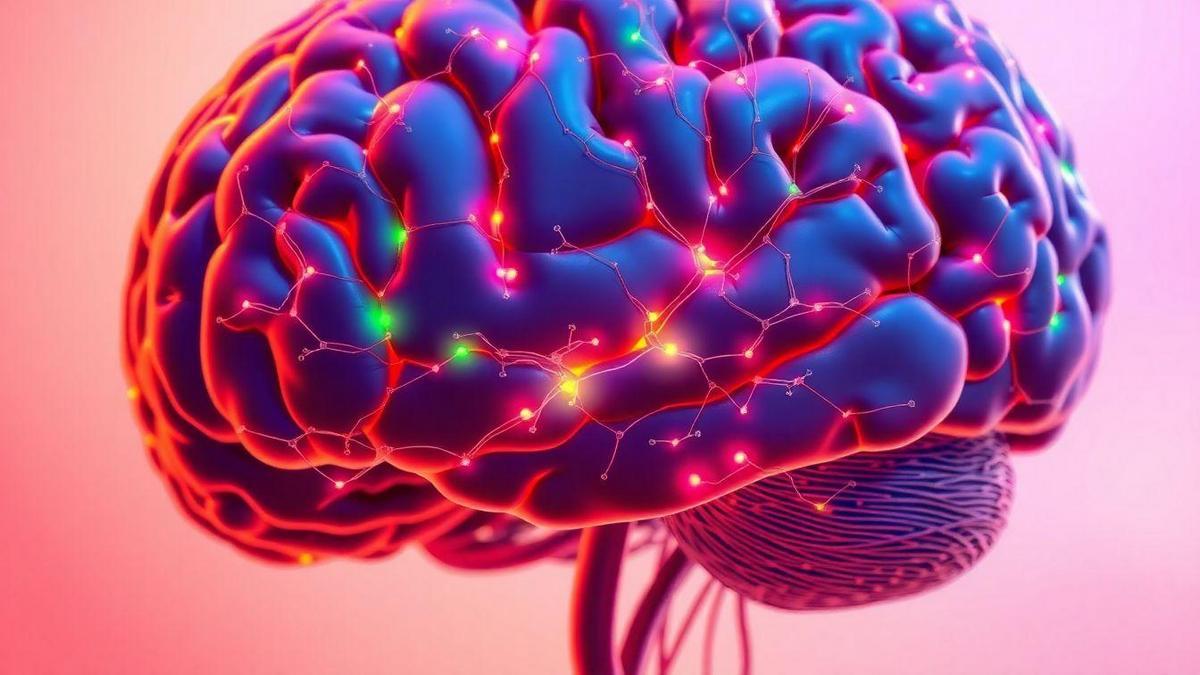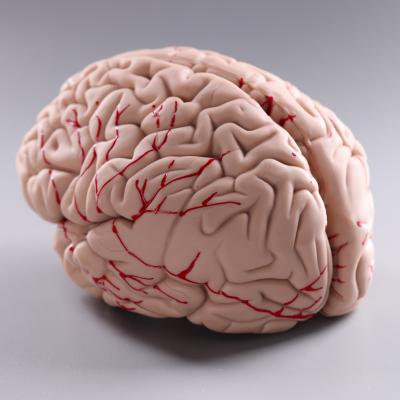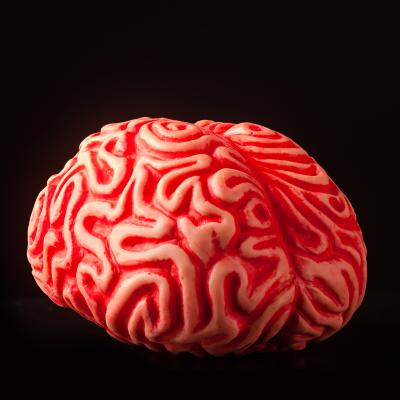Anúncios
Brain plasticity and neural regeneration are fascinating processes that reveal the adaptive potential of the human brain. Understanding how these functions operate enables significant advances in health, education, and mental well-being. These mechanisms are essential for both learning and recovery after injury.
Throughout life, the brain continues to reshape itself, responding to experiences, stimuli, and challenges. Studying these capabilities offers promising paths for neurological treatments and cognitive enhancement. Knowing these functions is the first step toward harnessing their transformative power.
Anúncios

How Brain Plasticity and Neural Regeneration Work
Brain plasticity, also known as neuroplasticity, refers to the brain’s remarkable ability to reorganize itself by forming new neural connections throughout life. This capacity is essential for learning, memory, and recovering from brain injuries. The mechanisms of brain plasticity include synaptic plasticity, which involves changes in the strength of connections between neurons, and structural plasticity, which refers to the brain’s ability to physically alter its structure in response to experiences. This dynamic process allows the brain to adapt to new situations, learn new skills, and recover from trauma.
Neural regeneration, on the other hand, is the process by which the nervous system repairs itself after an injury. Although the peripheral nervous system has a greater capacity for regeneration, the central nervous system (CNS)—which includes the brain and spinal cord—has historically been seen as having limited regenerative abilities. However, recent research has shown that the CNS can also exhibit some degree of regeneration through various mechanisms, including the activation of stem cells, the formation of new neurons (neurogenesis), and the reorganization of existing neural circuits. Understanding these processes is crucial for developing effective therapies for neurological disorders and injuries.
The interaction between brain plasticity and neural regeneration is complex and multifaceted. For example, after a stroke or traumatic brain injury, the brain can undergo plastic changes to compensate for lost functions. Neuroplasticity can help the brain reorganize to take over functions previously managed by damaged areas. This adaptive response is influenced by several factors, including the individual’s age, the extent of the injury, and the timing of rehabilitation interventions. Therefore, a comprehensive understanding of how brain plasticity and neural regeneration work together can pave the way for innovative treatments in neurology.
Research in this field has also revealed that certain experiences and activities can enhance brain plasticity and promote neural regeneration. For instance, learning new skills, engaging in physical exercise, and practicing meditation have all been shown to stimulate neuroplastic changes in the brain. By leveraging these insights, individuals can take proactive steps to support their cognitive health and resilience against age-related decline or injury. In summary, the mechanisms of brain plasticity and neural regeneration are essential for maintaining cognitive function and recovering from neurological challenges.
What Is Brain Plasticity?

Brain plasticity, also called neuroplasticity, is the brain’s ability to change over time. This process involves the creation and strengthening of neural connections in response to experiences. It is essential for learning and adaptation.
There are two main types of plasticity: synaptic and structural. Synaptic plasticity deals with changes in the connections between neurons, while structural plasticity refers to physical changes. Both allow the brain to respond to new challenges.
Neuroplasticity is more intense during childhood but persists throughout life. Adults can also develop new neural connections, although at a slower rate. This shows that it’s never too late to learn something new or recover from injuries.
External stimuli such as education, environment, and physical activities directly influence plasticity. That’s why keeping the brain active is essential to promote its flexibility. This concept redefines how we understand the mind’s capacity for change.
Advantages of Understanding Brain Plasticity and Neural Regeneration
Understanding brain plasticity and the capacity for neural regeneration offers numerous advantages, especially in the fields of medicine, psychology, and education. One of the main benefits is the potential to develop targeted therapies for individuals suffering from neurological disorders such as stroke, traumatic brain injury, and neurodegenerative diseases like Alzheimer’s. By harnessing the brain’s natural ability to adapt and reorganize, clinicians can design rehabilitation programs that promote recovery and improve patients’ quality of life.
In addition, knowledge of brain plasticity can inform educational practices. Educators can use strategies that foster a growth mindset, encouraging students to embrace challenges and view failure as a learning opportunity. By creating environments that stimulate neuroplastic changes, educators can enhance cognitive development and academic performance. This understanding also underscores the importance of lifelong learning, as engaging in intellectually stimulating activities can strengthen neural connections and promote cognitive resilience throughout life.
Another significant advantage of understanding brain plasticity is its implications for mental health. Therapeutic approaches that incorporate mindfulness, cognitive-behavioral techniques, and other interventions can harness the brain’s plasticity to relieve symptoms of anxiety, depression, and other mental health conditions. By reshaping thought patterns and emotional responses, individuals can experience profound changes in mental well-being, leading to improved coping strategies and overall life satisfaction.
Moreover, recognizing the potential for neural regeneration opens new avenues for research and innovation in regenerative medicine. Scientists are exploring ways to stimulate the brain’s regenerative capabilities, potentially leading to breakthroughs in the treatment of conditions once thought irreversible. This could revolutionize how we approach brain injuries and neurodegenerative diseases, offering hope for recovery and better outcomes for millions of people around the world.
How to Improve Brain Plasticity and Support Neural Regeneration

Improving brain plasticity and supporting neural regeneration is an achievable goal for individuals looking to enhance their cognitive health. Engaging in regular physical exercise is one of the most effective ways to promote neuroplasticity. Physical activity increases blood flow to the brain, stimulates the release of growth factors, and encourages the formation of new neural connections. Activities such as aerobic exercise, strength training, and even yoga have been shown to have positive effects on brain health.
Practicing mindfulness and meditation is another powerful method for enhancing brain plasticity. Mindfulness practices encourage individuals to focus on the present moment, reducing stress and promoting emotional regulation. Research has shown that regular meditation can lead to structural changes in the brain, including increased gray matter density in areas associated with memory, emotional regulation, and self-awareness. By incorporating mindfulness into daily routines, individuals can cultivate a more resilient and adaptable brain.
Stimulating the brain with puzzles and games is a fun way to promote neuroplastic changes. Engaging in activities that challenge cognitive skills—such as crosswords, Sudoku, or strategy games—can strengthen neural connections and improve problem-solving abilities. These mental exercises not only boost cognitive function but also provide a sense of accomplishment and enjoyment, further motivating individuals to continue challenging their brains.
Maintaining a balanced and nutritious diet is crucial for supporting brain health and plasticity. Nutrients such as omega-3 fatty acids, antioxidants, and vitamins play vital roles in brain function and regeneration. Foods rich in these nutrients, including fatty fish, berries, leafy greens, and nuts, can contribute to cognitive performance and overall brain health. A well-balanced diet not only fuels the body but also nourishes the brain, promoting its ability to adapt and regenerate.
Getting adequate sleep is essential for optimal brain function and health. Sleep plays a critical role in memory consolidation, emotional regulation, and the removal of toxins from the brain. During deep sleep, the brain undergoes essential processes that support learning and memory. Prioritizing quality sleep can enhance cognitive performance, improve mood, and facilitate the brain’s natural regenerative processes.
Fostering connections and social interactions is another important factor for improving brain plasticity. Engaging in meaningful relationships and social activities stimulates cognitive function and emotional well-being. Social interactions challenge the brain to navigate complex social dynamics, promoting adaptability and resilience. Building a supportive social network can provide encouragement, motivation, and opportunities for cognitive engagement, further enhancing brain health.
In conclusion, improving brain plasticity and supporting neural regeneration involves a multifaceted approach that includes physical activity, mindfulness practices, cognitive challenges, a nutritious diet, adequate sleep, and social engagement. By incorporating these strategies into daily life, individuals can proactively support their cognitive health and harness the brain’s remarkable ability to adapt and regenerate.
Did You Enjoy Learning About Brain Plasticity and Neural Regeneration?
Understanding brain plasticity and the capacity for neural regeneration is not only fascinating but also empowering. Knowing that our brains can adapt and change throughout our lives opens exciting possibilities for personal growth and recovery. By implementing strategies that enhance neuroplasticity, individuals can take control of their cognitive health and foster resilience against age-related decline or injury.
As we continue to explore the complexities of brain plasticity and neural regeneration, we discover new avenues to improve mental health, enhance learning, and develop innovative treatments for neurological disorders. The potential for positive change is within our reach, and by embracing this knowledge, we can cultivate healthier, more adaptable minds for ourselves and future generations.
Frequently Asked Questions
What is brain plasticity?
Brain plasticity is your brain’s ability to change and adapt. This happens when you learn something new or recover from an injury.
How does brain plasticity help with recovery?
When you’re injured or ill, your brain tries to heal. It forms new connections to replace the ones that were lost. This is part of “understanding brain plasticity and neural regeneration.”
Do all ages have brain plasticity?
Yes! Your brain can adapt at any age. Children have a lot of plasticity, but adults can also learn and recover.
Can brain plasticity be increased?
Yes, you can boost it! Reading, playing games, and learning new skills help improve this capacity.
What are the benefits of brain plasticity?
Brain plasticity helps you learn, improve skills, and even recover from injury. It’s like a superpower of the brain!
